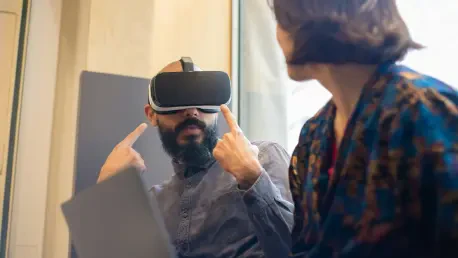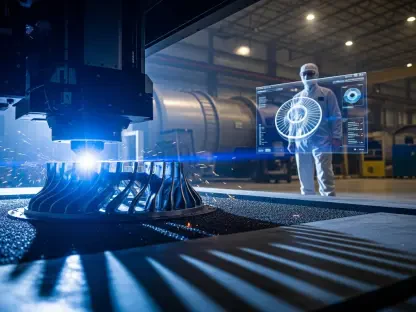In the rapidly evolving landscape of 3D design and virtual reality, finding a tool that bridges the gap between immersive feedback and practical workflow integration remains a significant challenge for many teams. Imagine a scenario where designers and stakeholders, separated by continents, can step into the same virtual space to critique a life-sized model as if it were physically present. This is the promise of Adobe Substance 3D Reviewer, a platform recently launched to enhance the way 3D models are evaluated in VR and web environments. Developed with input from industry leaders and optimized for specific VR hardware, this tool aims to revolutionize spatial design reviews by offering true-to-scale assessments. However, while its potential is intriguing, questions remain about whether it can truly meet the diverse needs of modern production pipelines or if it serves a more niche role in the broader ecosystem of design tools.
Exploring Core Features and Capabilities
Immersive Spatial Review in VR
Adobe Substance 3D Reviewer stands out by enabling teams to experience 3D models at a realistic 1:1 scale within a virtual reality setting. This immersive approach allows for a deeper understanding of form, ergonomics, and spatial relationships that flat screens simply cannot replicate. Designers can evaluate how a product feels in a real-world context, whether it’s assessing the proportions of a piece of furniture or the layout of an architectural space. Collaboration is further enhanced through real-time or asynchronous feedback mechanisms, where comments—via voice or text—can be pinned to specific parts of a model. This fosters precise communication across distances, ensuring that all team members share a unified vision of the design’s intent. While the focus remains on holistic assessment rather than granular detail, this capability marks a significant step forward for early-stage design validation, particularly for industries reliant on spatial accuracy.
Supported Formats and Technical Scope
Diving into the technical side, Adobe Substance 3D Reviewer supports a range of standard 3D file formats such as OBJ, FBX, glTF/GLB, USD, and STEP, alongside experimental compatibility with industrial formats like DXF and CATIA. However, performance considerations are crucial, as file sizes are capped at 500 MB, with a recommendation to optimize down to around 3 MB for smoother operation. Texture resolutions are limited to 2048×2048 pixels, and only static assets are supported, meaning animated or rigged models must be converted to fixed poses before review. These constraints indicate that the tool is tailored for specific use cases rather than comprehensive production needs. For teams working on complex visual effects or intricate animations, these limitations may necessitate supplementary software, positioning this platform as a specialized asset rather than a standalone solution for all design challenges.
Assessing Limitations and Practical Applications
Constraints in Detail and Complexity
While Adobe Substance 3D Reviewer excels in spatial evaluation, it falls short when it comes to detailed material inspection or shader complexity. The platform does not support advanced material fidelity or dynamic elements, which are often critical in high-end digital content creation workflows. For professionals accustomed to pixel-perfect rendering or granular control over texture channels, this tool may feel restrictive, as its primary strength lies in assessing overall form rather than intricate surface details. Additionally, the lack of integration with version control systems could pose challenges for studios with established pipelines that rely on seamless tracking of design iterations. These gaps suggest that while the tool offers unique immersive benefits, it is best utilized alongside more robust platforms to cover the full spectrum of production requirements.
Accessibility and Workflow Integration
On a positive note, the accessibility of Adobe Substance 3D Reviewer is a significant advantage, as it is available at no cost with a basic Adobe ID. This lowers the barrier to entry for smaller teams or independent creators who may not have access to premium software suites. However, broader tools within the associated collection, such as Sampler or Painter, require paid subscriptions, which could create disparities in workflows if not all team members have the same access. For seamless integration, it’s recommended to test compatibility with specific file formats and scale expectations before fully adopting the tool into existing processes. While alternatives like browser-based viewers or cloud platforms offer different strengths, this VR-focused solution carves out a niche for itself by prioritizing immersive feedback over traditional review methods, though careful planning is needed to align it with comprehensive design needs.
Reflecting on Strategic Value
Niche Role in Design Validation
Looking back, Adobe Substance 3D Reviewer has carved out a distinct space in the realm of 3D design by focusing on spatial understanding and collaborative feedback in a virtual environment. Its ability to render models at true scale and facilitate precise commentary proves invaluable for teams prioritizing ergonomics and contextual evaluation during the initial stages of design. Though it lacks the depth required for advanced material work or animation, its role as a complementary tool is undeniable for those who embrace its strengths. The free access model further democratizes its use, allowing a wide range of users to experiment with VR-based reviews without significant financial investment. This positions the platform as a stepping stone for immersive design rather than a catch-all solution.
Future Considerations for Adoption
As the dust settles on its initial rollout, the path forward for Adobe Substance 3D Reviewer involves strategic testing and adaptation within varied workflows. Teams are encouraged to explore how its VR capabilities can enhance specific project phases, particularly in industries like architecture or product design where scale matters most. Addressing its limitations through integration with more comprehensive tools becomes a practical next step, ensuring that gaps in material detail or animation support are filled by other software. For those considering adoption, the focus shifts to aligning expectations with the tool’s core purpose—spatial feedback—and leveraging its collaborative features to bridge communication gaps. This balanced approach promises to maximize its utility while paving the way for future enhancements in immersive design technology.









